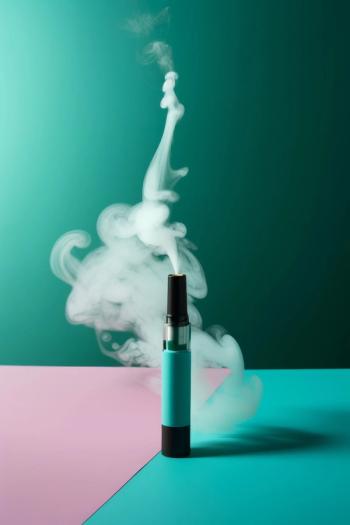
Tricky Terpenes: Under-Regulated Use of Added Terpenes in a Regulated Cannabis Industry
Terpenes can be tricky. Although cannabis is heavily regulated, since cannabis-derived terpenes do not contain tetrahydrocannabinol (THC) and other cannabinoids, they are not regulated in the same way that cannabis is.
It is always surprising that even in the cold of winter, the smell of pine trees persists and provide a wonderful wood-pine scent throughout the forest. We can thank terpenes for that—pinene, we are looking at you! Terpenes provide humans an almost whimsical nature walk filled with natural aromas, but what does the plant get out of smelling good? Terpenes play an evolutionary beneficial role; it boils down to survival. Some terpenes may act as a natural insect repellant, some attract pollinators, while others even support the plant to recover from damage. Cannabis is well known for its high concentrations of terpenes, so much so that terpene ratios are marketed at retail. This is not just a marketing ploy; terpenes strongly impact the aromatic, flavor, and overall experience of cannabis.
However, terpenes can be tricky. Although cannabis is heavily regulated, since cannabis-derived terpenes do not contain tetrahydrocannabinol (THC) and other cannabinoids, they are not regulated in the same way that cannabis is.
Specifically, this poses an issue with added terpenes. Most often, terpenes are removed during various extraction processes, then added back into the product to maintain a specific taste and fragrant profile. The specific profile may mirror what is naturally occurring in the plant or a formulation of a proprietary blend. Either way, anything added to a natural product is considered an added ingredient. There are multiple aspects of added terpenes to cover—how terpenes are sourced, terpene ratios, state specific allowance with added terpenes, and its intended use. [Note: Allay Consulting has a regulatory perspective on this topic, cannabis connoisseurs may have completely different talking points on terpenes].
Sources of Terpenes
Since terpenes are found all throughout nature, they can be sourced from many different plants other than cannabis. Terpenes can even be formulated in a laboratory to mimic any aroma you may want. Commonly sourced terpenes include: cannabis derived terpenes, non-cannabis naturally occurring terpenes, and synthetic terpenes. Although these types of terpenes may share similar chemical characteristics, not all are created equal, at least from a regulatory point of view.
Cannabis derived terpenes are collected during the extraction process, then added back into the product as an ingredient. Many manufacturers prefer this method and even attempt to mirror the terpene profile that is naturally occurring in the cannabis flower.
Many companies sell naturally occurring terpenes derived from plants other than cannabis. These are often called, naturally-derived or botanically-derived terpenes. These types of terpenes can be isolated from lavender, cloves, citrus, pine needles, and so on. Although these are not coming from the cannabis plant, they share similar profiles as cannabis-derived terpenes.
Synthetically-derived terpenes are available to the industry as well. Synthetic terpenes are produced in a laboratory via chemical manipulation. Synthetic terpenes and flavors are readily available to the cannabis industry.
Keep in mind that each state has their own specific requirements when it comes to added terpenes. Some states strictly only allow the use of cannabis derived terpenes, whereas other states allow the botanically derived and synthetically derived terpenes. Check your state and local jurisdiction before adding these types of ingredients.
Added Terpene Ratios
Just as with any added ingredient, adding too much of anything may not be healthy. Terpenes can be added at differing ratios than what occurs naturally in the plant. Let’s say for example, some cannabis strains naturally contain 1% limonene (notorious citrus scent), that same limonene terpene can be added at 8% in a vape cartridge. Is adding a different ratio of terpenes into a finished product safe for consumers? Unfortunately, the industry is lacking studies when adding terpenes at higher ratios, especially for vaping products. Since the industry is lacking evidence of safe terpene levels for smoking products, food products, dietary supplements, and cosmetics, this is a business decision and should be based on research and risk severity.
Approved Sourcing
The first question to any infusion company should be, is the ingredient allowed to be used in the product? For example, food and dietary supplement manufacturers must make sure that each ingredient is generally recognized as safe (GRAS). What is allowed in a cosmetic product may be different than what is allowed in a dietary supplement product. It will be more difficult to determine if ingredients are allowed in an inhalation product since the US Food and Drug Administration (FDA) has little oversight in the traditional tobacco industry. After ensuring the ingredient is allowed in the final product type, we can look for an approved manufacturer for sourcing.
Sourcing from Licensed Manufacturers
Unfortunately, we witnessed the consequences of not approving an ingredient source. A product recall was issued for a cannabis infused product because of a failed pesticide test—specifically myclobutanil. Through an investigation, it was determined that an α-pinene terpene was sourced from an ornamental pine tree company. Ornamental companies have more leniency when it comes to applying pesticides and other agricultural chemicals compared to the heavily regulated cannabis and food industry. This was a major lesson learned in approving the source of all ingredients, even terpenes. Terpenes used for consumption must be manufactured at a licensed and regulated facility. You must approve your source of ingredients! Verifying the facility is properly licensed guarantees that there is regulatory oversight that employees are handling the product safely. For example, a regulated facility would make certain that employees have accessible hand sinks to wash hands their hands, are practicing adequate sanitation, prevention of product contamination, and so forth.
Manufacturers Ingredient Intended Usage
Aroma terpenes and flavor terpenes are not created equal. Although these two types of terpenes may have similar qualities, one might be for your aromatherapy diffuser and the other for a food product. The intended use of any added ingredient should be verified prior to purchasing the product. Either the manufacturer or the material safety data sheet will state the intended use of the ingredient. You may see similar wording like, “not to be ingested” or “intended use: orally consumable.” By verifying the ingredient is being used as intended, most of the liability falls onto the original manufacturer rather than the infusion company.
Added Ingredient Regulatory Checklist
When using any type of terpene or other added ingredients, consider the following:
- Check your state and local jurisdiction on adding ingredients to cannabis products, especially when using botanically derived terpenes and synthetically derived terpenes.
- Verify the added ingredient is on the GRAS list, FDA ingredients database, or equivalent per its intended use (inhalation, orally consumed, topically applied). Keep in mind that it can be difficult finding an ingredient approved to be used for an inhalation product.
- Approve your ingredient source! Ensure the manufacturer is licensed by a public health agency, especially when the added ingredient will be used in an orally consumable product. By verifying the manufacturer is licensed, regulated, and held to regulatory standards, the ingredient is considered obtained from an approved source. Bonus points for sourcing ingredients from a current good manufacturing practice (cGMP)-certified facility.
- Confirm the intended use of any ingredient. Request in writing stating manufacturer’s intended use of the terpene that aligns with your intended use.
It is ultimately the responsibility of the infusion manufacturer to guarantee all added ingredients are compliant. After all, it’s your company name on the product. If compliance is neglected, the infusion company will be held responsible. Do your due diligence, create safe products, and make your customers proud!
If you need support with added ingredients and approved sourcing, reach out to Allay Consulting.
About the Author
Kim Stuck is the CEO and founder of Allay Consulting. Direct correspondence to:
Newsletter
Unlock the latest breakthroughs in cannabis science—subscribe now to get expert insights, research, and industry updates delivered to your inbox.




